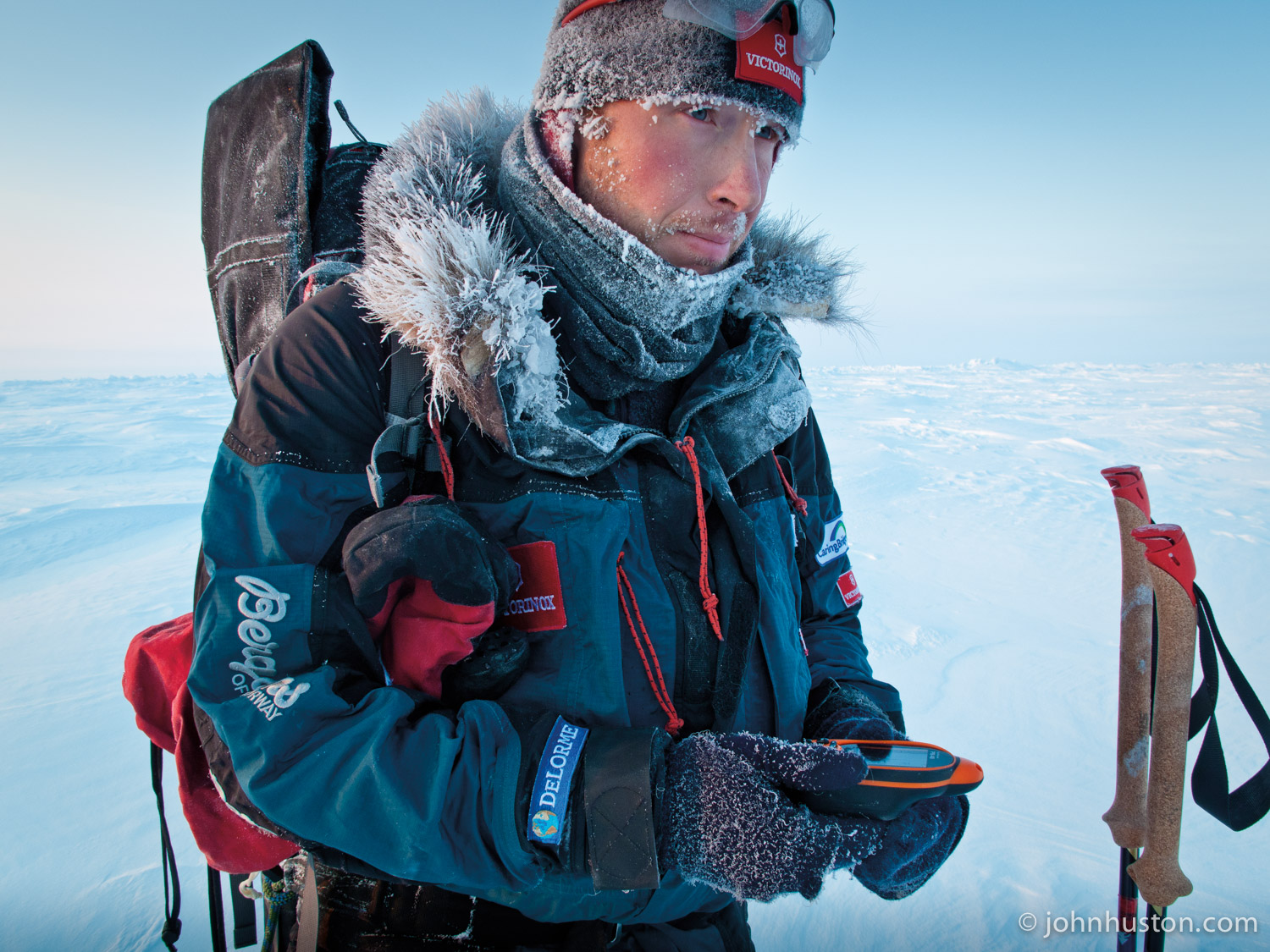John checks out some polar bear tracks.
by John Huston
Today started out as a normal day with some heavy snow waves as we crossed old sea ice. Old sea ice features kind of small snow dunes, some two to ten feet tall with all sorts of rubble mixed in. And we dealt with that for the first few hours of the day, and actually switched over to snowshoes for the first time in a week for an hour before switching back to skis for the rest of the day.
Around noon, the ice made a transition to some newer, maybe last multi-year ice, but possibly just new one-year-old ice. And we started crossing small leads that look like they had been opened and then frozen in the past two or three weeks. On one of these leads right around noon, we saw polar bear tracks heading south-southwest, which is the opposite of our direction of travel. We looked at the tracks and it was apparent that it was a mother and two cubs. The cubs' paw prints were about the size of a baseball, three or four inches in diameter. And the mother's prints were quite large and they were eight, maybe even a little bigger, inches in diameter. And they all seem to be heading the same direction and then traveling together.
When we see polar bear tracks it's interesting and fun, but it also puts us on a little bit alert, so we travel closer together and take all necessary precautions to be safe. The chances of a polar bear encounter on this expedition route are very rare. But the tracks that we saw seem to be somewhat new, perhaps less than 48-hours old as identified by lack of snow cover on the tracks in the lead since it snowed 48-hours ago. But we feel good. We feel that the bears are going the opposite direction and we feel safe out here. So just to let you know that.
We did travel west a bit today, so perhaps we are drifting west. We will find out when we wake up in the morning, and turn on our DeLorme GPS. That's it for now. Thanks for listening. Tyler and I will have a weekly update set for you soon. Good night.
Daily Expedition Data
Date: March 21, 2009
Location: N84° 19.798' W074 43.714'
Time Traveled: 9 hours 30 minutes
Distance Traveled: 5.2 nautical miles
AM Temperature: -36°F
PM Temperature: -22°F
low contrast, light N/NE breeze
341 nautical miles to the North Pole









